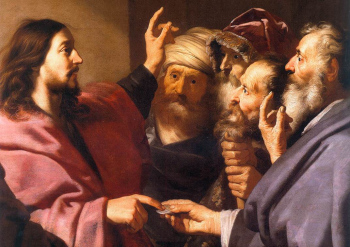One difficulty with studying the New Testament, and especially the Gospel accounts, is that certain religious and political groups are referenced without explanation. The first century Biblical writers wrote about events under the assumption that their audience knew who these groups of people were. They also assumed their readers knew what these groups believed in and the influence over everyday life they did or did not possess.
For us in the 21st century, however, these groups can be something of a mystery and a puzzle. One complicating factor in understanding the Gospels (and the rest of the New Testament) is that the Bible does not present to us a unified, Jewish-based religion founded on the same faith and teachings as the ancient patriarchs.
The Bible presents to us different flavors of a religion known as Judaism, which, although it had similarities with Old Testament teachings, was mainly composed of self-righteous religious traditions.

Non-Christian Sects
In his monumental work entitled "Antiquities of the Jews," the Jewish historian Flavius Josephus lists at least four main non-Christian religious sects of first century Judaism. They are the Pharisees, the Sadducees, the Essenes and a sect founded by Judas the Galilean (the Zealots).
Only two of the sects listed by Josephus are specifically recorded as such in the New Testament. They are the Pharisees and the Sadducees.
But there stood up certain of those who believed, who were of the sect of the Pharisees, saying, "It is obligatory to circumcise them, and to command them to keep the law of Moses." (Acts 15:5, HBFV).
Then the high priest rose up, and all those with him, being of the sect of the Sadducees; and they were filled with anger (Acts 5:17, HBFV).
One partly political-based party, the Zealots, is reference twice in Scripture.
And when it was day, He called His disciples to Him and chose from them twelve, whom He also named apostles . . . Matthew and Thomas; James, the son of Alpheus, and Simon who was called Zealot (Luke 6:13, 15, HBFV).
Then they (the apostles) returned to Jerusalem from the mountain called Mount of Olives, which is near Jerusalem, being about the distance of a Sabbath’s journey.
And after entering Jerusalem, they went up into the upper chamber, where both Peter and James were staying; and John and Andrew; Philip and Thomas; Bartholomew and Matthew; James, the son of Alpheus, and Simon the Zealot; and Jude, the brother of James (Acts 1:12 - 13, HBFV).
Specific sects and other related grouping of people not listed by Josephus, but which are discussed in the Bible (and covered in this series), include the disciples of John the Baptist, the elders, the priests, the Sanhedrin, the scribes and the Herodians.
Although a bit obvious, it should be stated that each group claimed a monopoly on the truth (either regarding God or politics in general). They usually argued and fought with one another over the correctness of their respective views.
The most important divisions among Jewish groups had to do with debates over three primary areas of God's law, which are Marriage, Sabbath and Religious Festivals, and the Temple and Purity.
It may seem, by reading the New Testament, that a great number of people belonged or associated with a particular party or religious group. At no time, however, did any group or sect constitute a majority of the population.